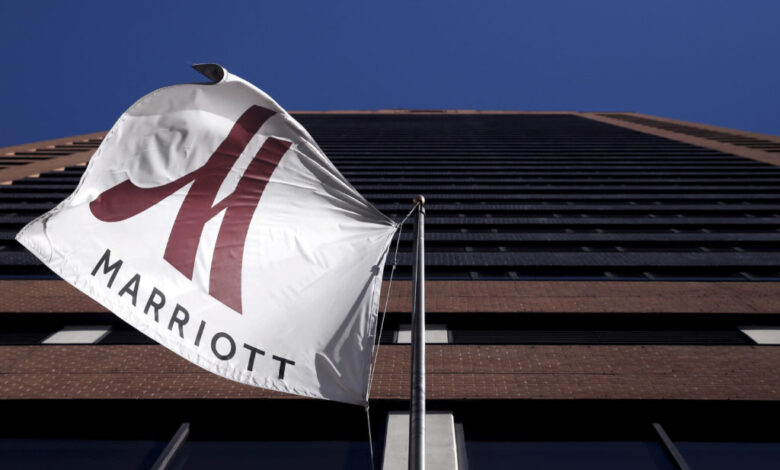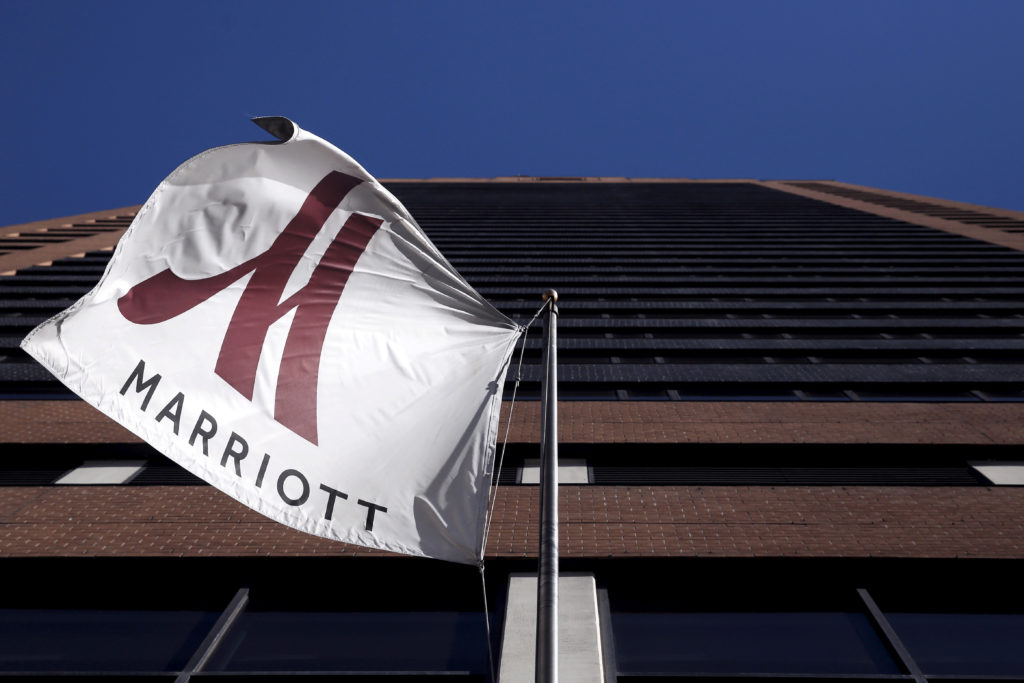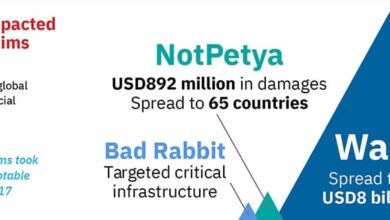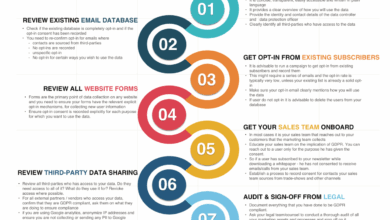
500 Million Marriott Customers Data Breach Disaster
Data of 500 million starwood marriott hotel customers compromised in cyber attack – Data of 500 million Starwood Marriott hotel customers compromised in a cyber attack – the sheer scale of this breach is breathtaking. Imagine half a billion people, their personal details exposed, their trust shattered. This wasn’t just a data leak; it was a seismic event in the hospitality industry, exposing vulnerabilities that shook the foundations of customer confidence and raised serious questions about data security practices across the board.
This post delves into the who, what, when, and why of this massive breach, exploring its far-reaching consequences and the lessons learned (or not learned) in its wake.
We’ll explore the timeline of events, from the initial attack to the eventual public disclosure, examining the devastating impact on affected customers and Marriott’s response. We’ll also investigate the methods used by the attackers, compare this breach to others, and discuss the legal and regulatory fallout. Finally, we’ll look at how this incident underscores the critical importance of robust data security measures for all businesses handling sensitive customer information.
The Scale of the Breach
The 2018 Starwood Marriott data breach remains one of the largest ever recorded in the hospitality industry, impacting a staggering 500 million guests. This massive compromise wasn’t just a matter of numbers; it represented a significant threat to the personal security and privacy of millions worldwide, highlighting the vulnerability of even the largest companies to sophisticated cyberattacks. The sheer scale of the breach necessitates a detailed examination of its impact.The magnitude of the breach is truly alarming.
500 million individuals had their personal information exposed, a number exceeding the populations of many countries. This vast number underscores the potential for widespread identity theft, fraud, and other serious consequences for affected individuals. The geographical reach of the breach was also extensive, affecting customers from nearly every corner of the globe. While precise figures for each country aren’t publicly available, reports indicate that the breach impacted guests from all continents, making it a truly global incident.
Compromised Data Types
The breadth of data compromised was equally concerning. The attackers gained access to a wide range of sensitive information, leaving individuals vulnerable to various forms of exploitation. The following table details the types of data compromised, their sensitivity levels, potential impacts, and illustrative examples:
| Data Type | Sensitivity Level | Potential Impact | Example |
|---|---|---|---|
| Names | High | Identity theft, phishing scams | John Smith |
| Addresses | High | Identity theft, mail fraud, physical security breaches | 123 Main Street, Anytown, CA 91234 |
| Email Addresses | High | Phishing attacks, spam, account takeovers | [email protected] |
| Phone Numbers | Medium | Spam calls, telemarketing fraud, SIM swapping | (555) 123-4567 |
| Passport Numbers | Extremely High | Identity theft, travel fraud, illegal immigration | AB1234567 |
| Payment Card Information | Extremely High | Financial fraud, unauthorized purchases | XXXX XXXX XXXX 1234 |
| Starwood Preferred Guest (SPG) Account Information | High | Account takeover, unauthorized rewards redemption | SPG Membership Number, login credentials |
| Travel Information | Medium | Targeted scams, stalking | Past travel dates and destinations |
| Other Personal Information | Variable | Various forms of identity theft and fraud | Birthdates, gender, employment information |
The Timeline of Events
The timeline surrounding the Marriott Starwood data breach is complex, marked by a significant delay between the discovery of the breach and its public disclosure. Understanding this timeline is crucial for analyzing the company’s response and assessing the potential long-term consequences. The lack of transparency initially created significant uncertainty and fueled public concern.The precise dates surrounding the initial breach remain somewhat murky, as details have emerged piecemeal through legal filings and press releases.
However, piecing together the available information paints a picture of a protracted and troubling sequence of events.
The Breach and Initial Discovery
While the exact date of the initial compromise is still under investigation, it’s believed that the attackers gained access to the Starwood guest reservation database sometime in 2014. This occurred before Marriott’s acquisition of Starwood in 2016. The attackers reportedly remained undetected for a considerable period, exploiting vulnerabilities within the system to exfiltrate sensitive customer data. The prolonged undetected presence allowed for the accumulation of an enormous amount of data.
This extended timeframe significantly amplified the potential damage.
Discovery and Internal Investigation
Marriott announced that its internal investigation into the breach began in September 2018. This suggests that the company only discovered the breach several years after the initial compromise. The exact nature of the discovery remains undisclosed, but it likely involved internal security monitoring or external reporting. The delay between the actual breach and its internal discovery underscores the challenges in detecting and responding to sophisticated cyberattacks.
Public Disclosure and Response
The public announcement of the breach finally came on November 30, 2018. This marked a significant delay of approximately four years from the estimated start of the breach and several months from the initiation of the internal investigation. The delay undoubtedly impacted the company’s ability to mitigate the damage and manage the public relations fallout. The announcement included details about the compromised data, including names, addresses, passport numbers, and payment card information.
The Impact of the Delay
The lengthy delay between the discovery of the breach and its public disclosure had several significant negative consequences. First, it allowed the attackers more time to potentially monetize the stolen data. Second, it severely eroded customer trust in Marriott and Starwood. The company’s reputation suffered significantly, with customers expressing concerns about the security of their personal information and the company’s responsiveness.
Finally, the delay likely increased the company’s legal liability. Multiple class-action lawsuits were filed against Marriott, alleging negligence and failure to adequately protect customer data. The delay allowed for the accumulation of potential legal claims and increased the potential financial penalties. The delay significantly amplified the damage, both financially and reputationally.
The Methods of the Attack
The 2018 Starwood Marriott data breach, affecting 500 million guests, was a sophisticated operation likely involving multiple stages and exploiting several vulnerabilities within Marriott’s systems. Understanding the methods employed provides crucial insights into the evolving landscape of cyberattacks targeting large corporations.The attackers likely gained initial access through a combination of techniques. A common method involves phishing attacks targeting employees with access to sensitive systems.
A cleverly crafted email, perhaps mimicking an internal communication or a legitimate business partner, could have contained malicious attachments or links leading to malware infection. This malware could then be used to establish a persistent foothold within the network, allowing for lateral movement and data exfiltration. Alternatively, the attackers may have exploited a known vulnerability in a piece of software used by Starwood Marriott, such as an outdated or improperly configured application server.
Such vulnerabilities are frequently publicized and exploited by malicious actors.
Vulnerabilities Exploited
The specific vulnerabilities exploited in the Marriott breach remain partially undisclosed, likely due to ongoing investigations and security concerns. However, based on similar breaches, it’s plausible that several factors contributed to the attack’s success. These could include weak or easily guessed passwords, inadequate multi-factor authentication, lack of robust intrusion detection and prevention systems, and insufficient network segmentation. The attackers may have exploited a vulnerability in a third-party application or service integrated with Marriott’s systems, a common attack vector.
Furthermore, outdated software and a lack of regular security patching could have created opportunities for exploitation.
Comparison to Other Hotel Data Breaches
The Starwood Marriott breach shares similarities with other large-scale hotel data breaches, particularly in terms of the target (customer data, including payment information and personal details) and the methods used. For instance, the 2014 Target breach, while targeting a different industry, also involved the exploitation of a third-party vendor’s vulnerabilities to gain access to the network. Similarly, several other hotel chains have suffered breaches attributed to malware infections and exploitation of known vulnerabilities in their systems.
However, the scale of the Marriott breach, with its impact on a significantly larger number of customers, highlights the increasing sophistication and capabilities of cybercriminals. Unlike some breaches where the attackers primarily focused on financial data, the Marriott breach suggests a broader interest in collecting personal information, potentially for identity theft or other malicious purposes. The difference lies in the sheer volume of data compromised and the long-term implications for customer trust and brand reputation.
The Impact on Customers

The 500 million-record Starwood Marriott data breach represents a catastrophic loss of personal information, exposing customers to a wide range of potential harms. The sheer scale of the breach means that the consequences for affected individuals could be far-reaching and long-lasting, impacting their financial security, legal standing, and personal reputation. Understanding these potential impacts is crucial for both individuals and organizations in mitigating the risks associated with such large-scale data breaches.The compromised data likely included sensitive personal information such as names, addresses, phone numbers, email addresses, passport numbers, and payment card details.
This wealth of information makes affected customers vulnerable to a variety of threats.
Financial Risks, Data of 500 million starwood marriott hotel customers compromised in cyber attack
The exposure of payment card details presents an immediate and significant financial risk. Customers could become victims of fraudulent charges, requiring them to spend time and effort disputing transactions and potentially incurring fees or temporary credit limitations. Furthermore, the theft of passport numbers could facilitate identity theft, leading to the opening of fraudulent accounts, the accumulation of debt in the customer’s name, and significant damage to their credit score.
The cost of rectifying such financial damage can be substantial, both in terms of monetary losses and the time and effort required to restore financial standing. For example, a customer might find themselves dealing with multiple fraudulent credit applications, requiring extensive documentation and communication with financial institutions to resolve.
Legal Risks
Beyond financial losses, customers face potential legal risks. The misuse of personal information could lead to legal issues ranging from identity theft charges to lawsuits related to financial losses or reputational damage. The complexity of navigating legal processes, coupled with potential legal fees, adds another layer of stress and burden for affected individuals. Imagine, for example, a customer facing legal action due to a fraudulent loan application made using their stolen passport information.
This scenario could involve significant legal fees, time spent in court, and the potential for negative impacts on their employment prospects.
Reputational Risks
The breach also presents reputational risks. The misuse of personal data can lead to phishing scams, spam emails, and other forms of online harassment. This can damage a customer’s online reputation and potentially affect their professional and personal relationships. For instance, a customer might find their personal details used to create fake social media profiles or spread misinformation, damaging their online image and impacting their social interactions.
Restoring a damaged reputation after such an incident can be a long and challenging process.
Hypothetical Scenario: The Case of Sarah Miller
Imagine Sarah Miller, a frequent Starwood Marriott guest, whose data was compromised in the breach. Her passport number, credit card details, and home address were all exposed. Within weeks, she began receiving fraudulent credit card statements, and discovered several applications for loans and credit cards had been filed using her identity. The process of rectifying this situation involved numerous phone calls, letters, and hours spent disputing fraudulent charges and dealing with credit bureaus.
Furthermore, the unauthorized use of her personal information led to a barrage of spam emails and phishing attempts, impacting her online security and causing significant emotional distress. This scenario illustrates the multifaceted and potentially devastating impact a data breach can have on an individual’s life.
Marriott’s Response and Mitigation Efforts: Data Of 500 Million Starwood Marriott Hotel Customers Compromised In Cyber Attack
Marriott’s response to the massive data breach, affecting an estimated 500 million guests, was a crucial test of their crisis management capabilities. Their actions, both immediate and long-term, shaped public perception and had significant legal and financial ramifications. Analyzing their response allows us to assess the effectiveness of their strategies and identify areas for improvement in future breach responses.The initial response involved a complex interplay of internal investigations, external communication, and collaboration with law enforcement.
Marriott immediately launched an internal investigation to determine the extent of the breach, identify its root cause, and understand the compromised data. Simultaneously, they began notifying affected customers, a process that took considerable time due to the sheer scale of the breach. The company also engaged cybersecurity experts and forensic investigators to assist in the investigation and remediation efforts.
Beyond immediate actions, Marriott invested in enhancing their security infrastructure and implemented new security protocols to prevent future breaches.
Notification of Affected Customers
Marriott’s notification process was a significant aspect of their response. Given the magnitude of the breach, it was a complex undertaking. While the company attempted to notify all affected individuals, the process was staggered and extended over a period of several months. The notifications included information about the types of data compromised, advice on protecting their personal information, and offers of credit monitoring services.
The timeline and the clarity of the communications were criticized by some, highlighting the challenges of managing such a large-scale notification effort.
Credit Monitoring Services Offered
As part of their response, Marriott offered affected customers free credit monitoring and identity theft protection services for a period of four years. This was a significant step in mitigating the potential financial harm to customers resulting from the breach. The provision of these services demonstrated a commitment to helping customers recover from the breach, although the long-term effectiveness of such services in preventing identity theft remains a subject of ongoing debate.
The specific credit monitoring service provider and the details of the coverage provided were clearly communicated to affected customers.
Internal Security Improvements
Following the breach, Marriott implemented several significant improvements to their cybersecurity infrastructure and protocols. These improvements included investments in enhanced network security, improved data encryption techniques, and more robust employee training programs on cybersecurity best practices. They also implemented a more comprehensive vulnerability management program to identify and address security weaknesses proactively. The extent of these improvements and their long-term effectiveness in preventing future breaches will be evaluated over time through ongoing security audits and assessments.
However, the commitment to these improvements signals a recognition of the need for proactive security measures.
Legal and Regulatory Implications
The Marriott data breach, exposing the personal information of 500 million guests, triggered a cascade of legal and regulatory consequences, highlighting the significant liabilities companies face in the wake of such incidents. The sheer scale of the breach, coupled with the sensitive nature of the compromised data, led to a complex web of investigations, penalties, and lawsuits. Understanding the legal ramifications of this incident offers valuable insight into the evolving landscape of data protection and cybersecurity.The legal fallout from the Marriott breach was extensive and multifaceted.
The massive Starwood Marriott data breach, affecting 500 million guests, highlights the urgent need for robust security solutions. Building secure and efficient applications is crucial, and that’s where understanding the evolution of app development comes in; check out this article on domino app dev the low code and pro code future to see how advancements are shaping the landscape.
Ultimately, better application development practices are key to preventing future incidents like the Marriott breach.
Marriott faced investigations and penalties from multiple regulatory bodies, including the UK’s Information Commissioner’s Office (ICO) and various state attorneys general in the United States. These investigations scrutinized Marriott’s data security practices, focusing on whether the company met its obligations under relevant data protection laws such as the GDPR (in Europe) and various state laws in the US.
The potential for significant fines was a major concern, given the number of affected individuals and the severity of the breach.
Fines and Lawsuits
The ICO fined Marriott £99.2 million (approximately $126 million USD at the time) for failing to adequately protect customer data. This penalty served as a stark warning to other organizations about the potential financial consequences of data breaches. Beyond regulatory fines, Marriott faced a barrage of class-action lawsuits from affected customers. These lawsuits sought compensation for the emotional distress, identity theft risks, and financial losses incurred by individuals due to the breach.
The total cost of these settlements and legal battles remains significant, illustrating the substantial financial burden data breaches can impose. The case serves as a cautionary tale, demonstrating the potential for massive financial repercussions beyond just regulatory penalties. For example, Equifax, another major data breach victim, faced billions of dollars in fines and settlements, showcasing the potential financial impact on a company’s bottom line.
Comparison with Other Major Breaches
The legal response to the Marriott breach can be compared to responses to other major data breaches, such as the Equifax breach and the Yahoo breaches. In all these cases, regulatory bodies imposed significant fines, reflecting a growing trend towards stricter enforcement of data protection laws. However, the specifics of the legal outcomes varied depending on factors such as the jurisdiction, the nature of the compromised data, and the company’s response to the breach.
While all these cases resulted in substantial fines and legal battles, the Marriott case stands out due to the sheer number of individuals affected and the geographical scope of the impact, leading to a complex and geographically diverse legal response. The differences highlight the need for organizations to tailor their data security practices to comply with a variety of international and national regulations.
Long-Term Security Implications

The Marriott data breach, impacting a staggering 500 million guests, sent shockwaves through the hospitality industry. Its long-term implications extend far beyond immediate financial losses and reputational damage; it fundamentally reshaped the industry’s approach to cybersecurity, highlighting the urgent need for robust, proactive security measures. The breach served as a stark reminder that the cost of inaction far outweighs the investment in preventative strategies.The scale of the breach forced a critical reevaluation of existing security protocols across the board.
Hotels, previously perhaps complacent about the sophistication of potential threats, were jolted into a new era of heightened awareness and increased investment in cybersecurity infrastructure. This ripple effect is still being felt, leading to significant changes in data protection strategies, employee training, and overall security architecture.
Impact on Industry Cybersecurity Practices
The Marriott breach significantly altered the hospitality industry’s approach to cybersecurity. Before the incident, many hotels relied on relatively basic security measures. Post-breach, there’s a noticeable shift towards more sophisticated technologies, including advanced threat detection systems, robust encryption protocols, and multi-factor authentication. Furthermore, the industry is investing heavily in employee training programs designed to improve awareness of phishing scams and social engineering tactics.
The breach also spurred the development and adoption of more stringent data governance policies and compliance frameworks, aiming to prevent future incidents. The industry is now more actively involved in sharing threat intelligence and collaborating on best practices, creating a more resilient and interconnected ecosystem.
Best Practices for Preventing Future Data Breaches
The need for proactive measures is now paramount. Hotels must adopt a holistic approach to cybersecurity, integrating multiple layers of defense to protect against various threats. This goes beyond simply installing security software; it requires a cultural shift prioritizing data security at all levels of the organization.The following best practices are crucial for preventing future data breaches in the hotel industry:
- Implement robust multi-factor authentication (MFA): MFA adds an extra layer of security, making it significantly harder for unauthorized individuals to access sensitive data, even if they obtain usernames and passwords.
- Utilize strong encryption for all sensitive data: Encryption renders data unreadable to unauthorized parties, even if a breach occurs. This includes data both in transit and at rest.
- Invest in advanced threat detection and response systems: These systems can identify and mitigate potential threats in real-time, reducing the window of vulnerability.
- Conduct regular security audits and penetration testing: Regular assessments identify vulnerabilities before malicious actors can exploit them. This proactive approach is essential for maintaining a strong security posture.
- Implement comprehensive employee training programs: Educating employees about phishing scams, social engineering tactics, and secure password management is crucial in preventing human error, a major cause of data breaches.
- Develop and enforce strict data governance policies: Clear policies outlining data access, usage, and storage procedures minimize the risk of unauthorized access and data leakage.
- Maintain up-to-date software and patching protocols: Regularly updating software and patching vulnerabilities reduces the attack surface, making it harder for attackers to exploit weaknesses.
- Establish a robust incident response plan: A well-defined plan ensures a coordinated and effective response in the event of a data breach, minimizing its impact.
- Collaborate with industry peers and share threat intelligence: Sharing information about emerging threats helps the entire industry to improve its collective security posture.
The Role of Data Security

The Marriott data breach starkly highlights the critical importance of robust data security measures for any company handling sensitive customer information. In today’s interconnected world, a failure to protect this data can lead to devastating financial losses, reputational damage, and legal repercussions, impacting not only the company but also the lives of millions of affected individuals. The scale of the breach underscores the need for a proactive, multi-layered approach to data security, going beyond mere compliance to a genuine commitment to customer privacy.Companies have a fundamental responsibility to safeguard the personal data entrusted to them.
This responsibility extends beyond simply adhering to regulations; it involves a proactive and comprehensive strategy that anticipates and mitigates potential threats. This includes implementing stringent security protocols, regularly auditing systems for vulnerabilities, and providing thorough employee training on data security best practices. Ignoring these responsibilities can lead to severe consequences, as evidenced by the Marriott breach and countless others.
Data Security Responsibilities of Companies
Companies handling sensitive customer data must prioritize data protection as a core business function, not an afterthought. This involves establishing a comprehensive data security policy that covers all aspects of data handling, from collection and storage to processing and disposal. Key responsibilities include implementing appropriate technical and organizational measures to protect data against unauthorized access, use, disclosure, alteration, or destruction.
Regular security assessments and penetration testing are crucial to identify and address vulnerabilities before they can be exploited. Furthermore, companies must establish clear incident response plans to effectively manage and mitigate the impact of data breaches should they occur. Transparency with customers in the event of a breach is also paramount, fostering trust and mitigating further damage.
The massive Starwood Marriott data breach, affecting 500 million guests, highlights the urgent need for robust security measures. This incident underscores why solutions like those discussed in this insightful article on bitglass and the rise of cloud security posture management are crucial. Failing to adopt proactive cloud security strategies leaves businesses vulnerable to similar devastating attacks, resulting in significant financial and reputational damage, as seen with Marriott’s breach.
Layered Security Approach
Imagine a castle, its defenses built in concentric layers. This is analogous to a robust data security system. The outermost layer represents network security, comprising firewalls, intrusion detection systems, and secure network configurations designed to prevent unauthorized access to the company’s network. The next layer involves data encryption, where sensitive data is transformed into an unreadable format, protecting it even if it’s intercepted.
Access control, the third layer, restricts access to data based on the principle of least privilege, ensuring only authorized individuals can access specific information. Finally, the innermost layer focuses on employee training, equipping employees with the knowledge and skills to identify and avoid phishing scams, malware, and other social engineering attacks. Each layer contributes to a strong overall defense, and a weakness in any one layer can compromise the entire system.
Closure
The Starwood Marriott data breach serves as a stark reminder of the ever-present threat of cyberattacks and the devastating consequences they can have. The scale of the breach, the sensitive nature of the compromised data, and the lasting impact on both customers and Marriott highlight the critical need for proactive and robust cybersecurity measures. While Marriott took steps to mitigate the damage, the incident underscores the importance of constant vigilance, advanced security technologies, and comprehensive employee training.
The lessons learned from this colossal breach should shape the future of data security within the hospitality industry and beyond, ensuring that such a catastrophic event is never repeated.
Frequently Asked Questions
What types of data were compromised in the Marriott breach?
The breach exposed a wide range of personal information, including names, addresses, passport numbers, credit card details, and even Starwood Preferred Guest (SPG) account numbers.
How long did it take Marriott to discover and disclose the breach?
There was a significant delay between the discovery of the breach and its public announcement, raising concerns about transparency and the potential impact on customer trust.
What compensation did Marriott offer affected customers?
Marriott offered affected customers credit monitoring services and other forms of compensation, but the specifics varied.
What legal consequences did Marriott face?
Marriott faced substantial fines and numerous lawsuits as a result of the breach.
What steps can hotels take to prevent similar breaches?
Hotels should invest in robust cybersecurity infrastructure, employee training, and data encryption to protect customer information. Regular security audits and penetration testing are also crucial.





